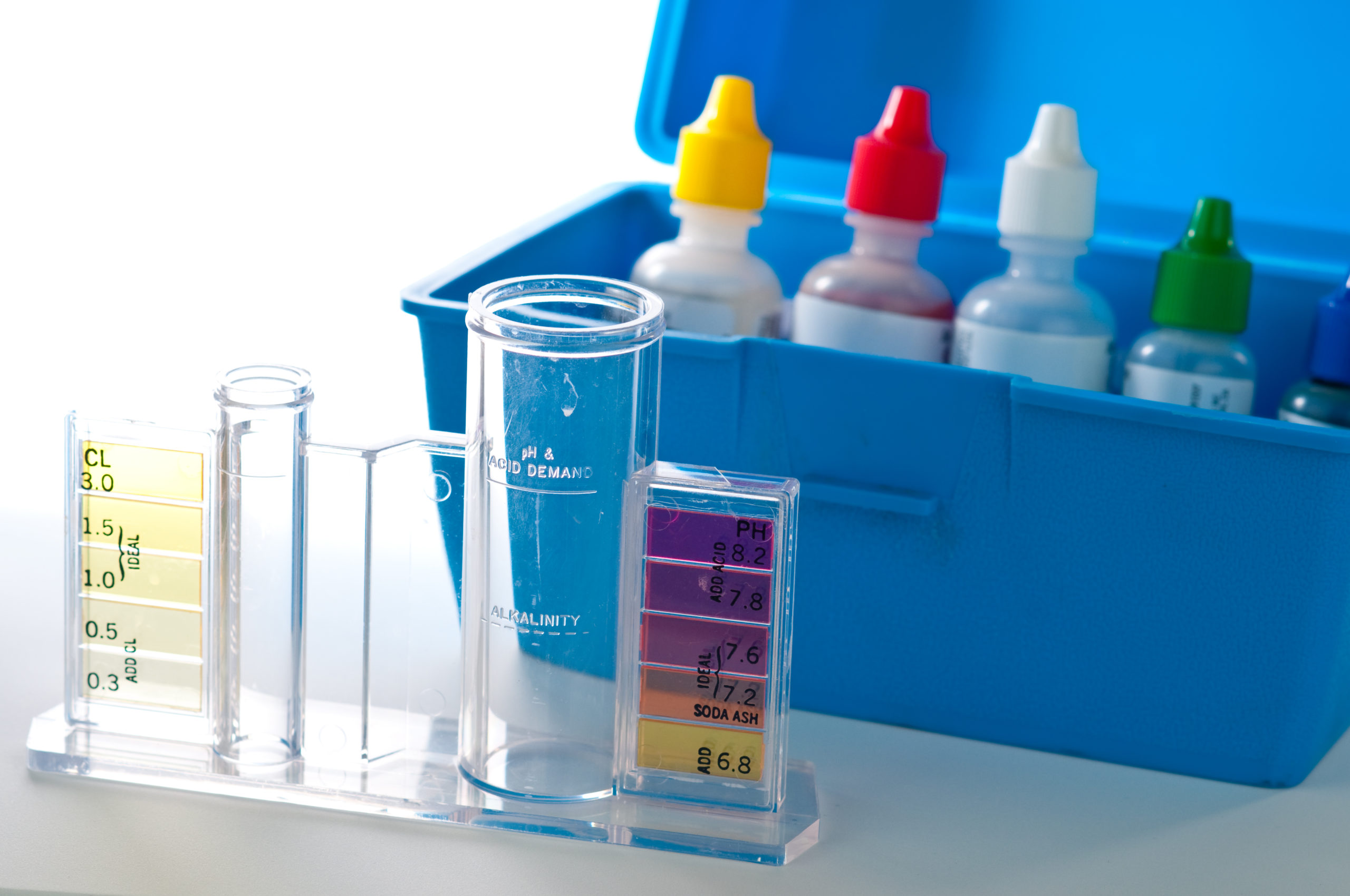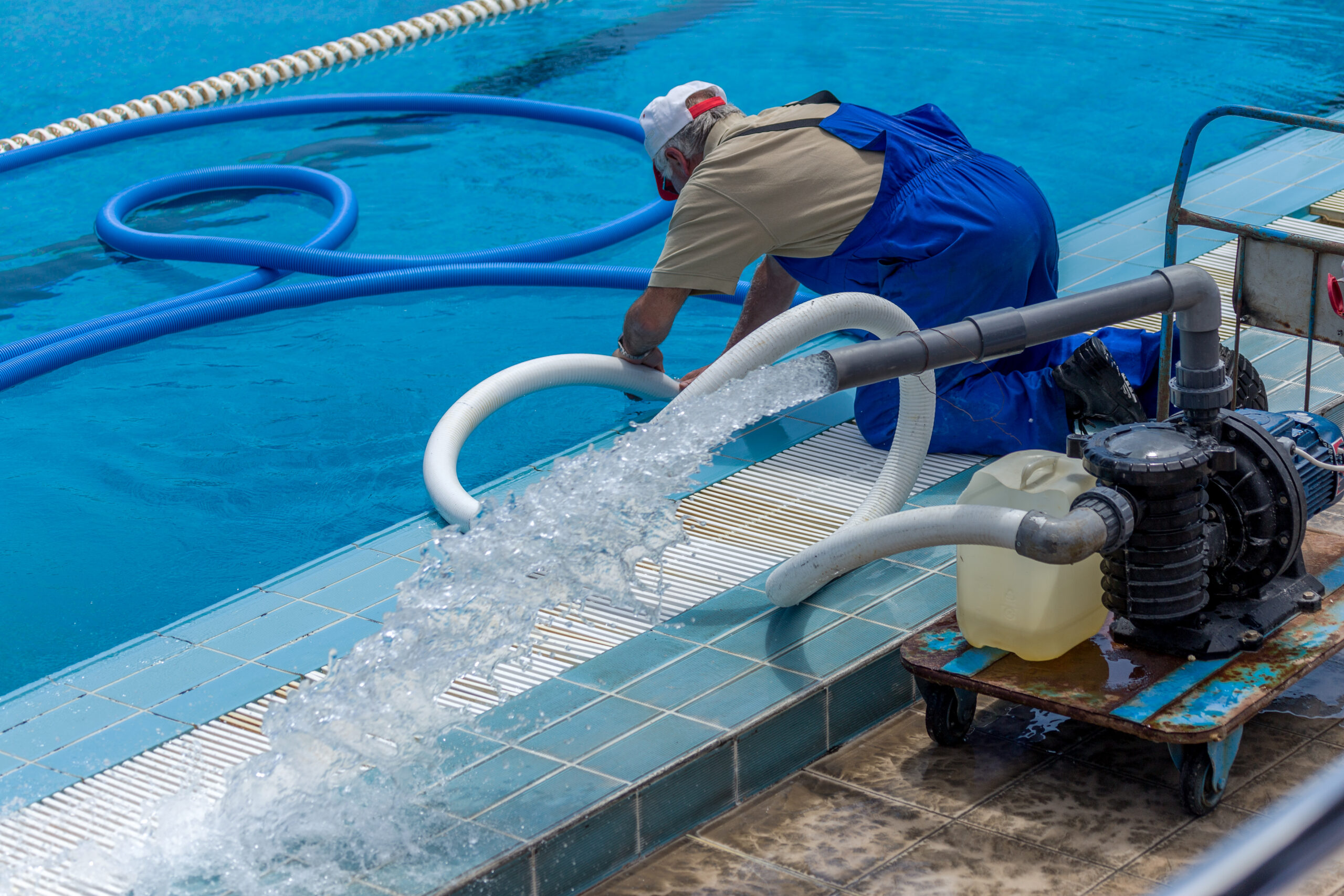You’ve just completed the construction of your dream pool. Now what?
Don’t fret, we’ve got you covered! With proper care and maintenance, you’ll ensure your pool’s longevity. This guide will outline crucial steps for post-construction pool care – from initial cleaning to regular upkeep.
So let’s dive in; it’s time to master the art of maintaining your newly constructed oasis!
Understanding the Basics of Post-Construction Pool Care
Let’s dive into understanding the basics of post-construction pool care to keep your new pool in top shape. Now that you’ve got your dream pool, it’s crucial to learn about maintenance-specifically, pool surface treatment and using protective pool covers.
Pool surface treatment is vital. It safeguards against potential damage caused by chemical imbalances or external factors. You’ll want to monitor pH levels consistently; ideal ranges are between 7.2-7.8 for optimal chlorine effectiveness and swimmer comfort. Additionally, consider treatments like calcium hardness increasers or stain preventers to protect your pool surface from scaling or discoloration.

Next, let’s talk about protective pool covers. They’re not just for keeping leaves out! These covers significantly reduce evaporation, maintaining water balance and temperature consistency-saving you time and money on heating costs and water replenishment.
Essential Steps for Initial Pool Cleaning After Construction
It’s crucial to understand the essential steps for initial cleaning after your swimming area has been built.
The first step is pool equipment setup. Ensure your filter system, pump, and heater are correctly installed and functioning optimally. You’ll need these to maintain a clean and healthy pool environment.
Next, focus on debris removal techniques. Start by skimming off any visible debris from the water surface using a long-handled net. Follow this with vacuuming the bottom of the pool to remove smaller particles that have settled there.
If you spot stubborn stains or scale buildup on the walls or floor of your pool, don’t fret! Use a specialized pool brush or an underwater vacuum cleaner designed for this purpose to scrub away these blemishes.
Lastly, remember to check and balance your water chemistry regularly. This includes maintaining appropriate pH levels, alkalinity, calcium hardness, and sanitizer levels.
As you master these essential steps in post-construction cleaning, you’re setting yourself up for success in maintaining a sparkling clean swimming area that’s inviting all year round. With careful attention to detail now, you can avoid potential issues down the line and enjoy a hassle-free swim every time.
Maintaining Water Chemistry in Your Newly Constructed Pool
Maintaining your swimming area’s water chemistry is crucial for its longevity and your health. The importance of chemical balance can’t be overstated. It ensures the prevention of harmful bacterial growth, including algae, and keeps the pool materials from degrading.
1. Modify pH Levels: Regulating the pH level between 7.2 to 7.8 helps in maintaining the effectiveness of chlorine, a principal sanitizer.
2. Monitor Alkalinity: Keep total alkalinity between 80-120 ppm; it stabilizes pH levels, preventing drastic changes that could harm pool surfaces or irritate swimmers.
3. Balance Calcium Hardness: Aim for 200-400 ppm; this prevents plaster damage and cloudy water.
Algae prevention techniques include regular brushing of your pool walls and floor, maintaining proper circulation and filtration systems, and keeping chlorine at optimal levels to prevent algae spores from blooming into problems.
Regular Maintenance Tips for New Pools
You’ve got to keep on top of regular maintenance tasks for your new swimming area to ensure its longevity and good condition. Paying special attention to the filter systems is paramount. It’s crucial that you clean or change the filters regularly, depending on the type used. For sand filters, backwash when pressure rises 8-10 PSI over normal operating level; for cartridge filters, clean them every fortnight during peak usage periods.
But it’s not just about the water. Consider investing in pool covers too – they are essential in maintaining cleanliness by keeping debris out when your pool isn’t being used. Plus, they conserve water by reducing evaporation and keep heating costs down by retaining heat.
Maintenance also involves checking equipment like pumps regularly for signs of wear and tear or any unusual noise which could indicate a problem looming large.
Remember, preventative maintenance will always be less expensive than repairs or replacements later down the line. It’ll save you time and money in the long run if you take care of issues early on.
Addressing Common Issues in Post-Construction Pool Care
Addressing common issues after your pool’s been built can be a bit of a chore, but it’s necessary to ensure its longevity. Troubleshooting filtration and maintaining pool surface care are part of these tasks that simply cannot be ignored. It’s essential to approach this with dedication and an eye for detail.
Your task involves:
1. Inspection: Conduct regular checks on your pool’s filtration system. Be alert for signs of blockage or inefficiency as they could indicate deeper issues.
2. Maintenance: Regularly clean the strainer baskets and backwash your filter when required. This is crucial for proper functioning as well as extending the life of the filtration system.
3. Pool Surface Care: Your pool’s surfaces need consistent attention too. Clean them routinely, ensuring removal of any algae or debris buildup which could affect water quality.

Frequently Asked Questions
What Are the Safety Precautions to Consider During Post-Construction Pool Care?
You need to prioritize pool fencing importance for preventing accidental falls. Additionally, it’s crucial you understand chemical balance in your pool to maintain water cleanliness and avoid skin or eye irritation.
How Long Will It Take for My Pool Water to Be Safe for Swimming After Construction?
Considering your query on pool readiness post-construction, it generally takes a week for chemical balancing and debris removal. You’ll need to closely monitor water quality during this period to ensure it’s safe for swimming.
Are There Any Specific Tools or Equipment I Need for Post-Construction Pool Care?
Yes, you’ll need specific tools for post-construction pool care. A test kit is vital to understand chemical balancing importance. Eco-friendly pool care products, like a robotic cleaner and solar cover, are also beneficial.
What Are the Potential Health Risks if Post-Construction Pool Care Is Not Done Properly?
If you don’t properly handle post-construction pool care, you’re risking chemical imbalance effects like skin and eye irritation. Even worse, bacterial contamination consequences could lead to serious illnesses and infections.
Should I Hire a Professional for Post-Construction Pool Care or Can I Do It Myself?
You can certainly tackle post-construction pool care yourself, but consider a cost analysis. Professionals often handle unexpected DIY challenges efficiently, potentially saving you money and ensuring your pool’s longevity and safety.
